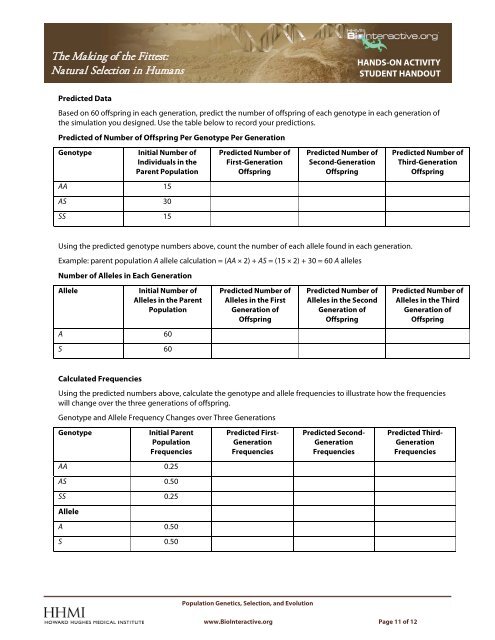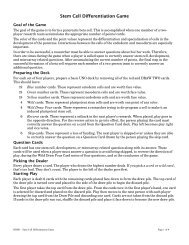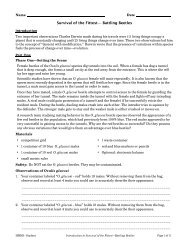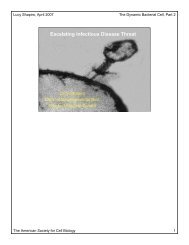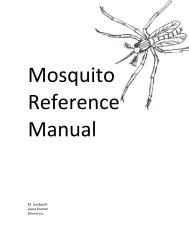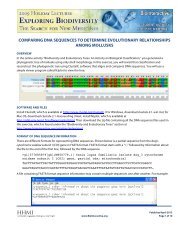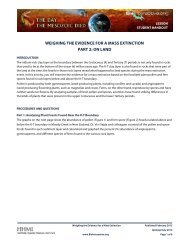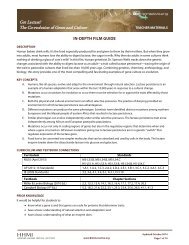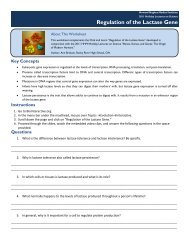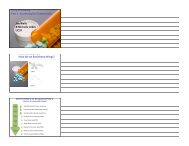Student Handout
Student Handout
Student Handout
Create successful ePaper yourself
Turn your PDF publications into a flip-book with our unique Google optimized e-Paper software.
The Making of the Fittest:Natural Selection in HumansHANDS-ON ACTIVITYSTUDENT HANDOUTPredicted DataBased on 60 offspring in each generation, predict the number of offspring of each genotype in each generation ofthe simulation you designed. Use the table below to record your predictions.Predicted of Number of Offspring Per Genotype Per GenerationGenotypeInitial Number ofIndividuals in theParent PopulationAA 15AS 30SS 15Predicted Number ofFirst-GenerationOffspringPredicted Number ofSecond-GenerationOffspringPredicted Number ofThird-GenerationOffspringUsing the predicted genotype numbers above, count the number of each allele found in each generation.Example: parent population A allele calculation = (AA × 2) + AS = (15 × 2) + 30 = 60 A allelesNumber of Alleles in Each GenerationAlleleInitial Number ofAlleles in the ParentPopulationA 60S 60Predicted Number ofAlleles in the FirstGeneration ofOffspringPredicted Number ofAlleles in the SecondGeneration ofOffspringPredicted Number ofAlleles in the ThirdGeneration ofOffspringCalculated FrequenciesUsing the predicted numbers above, calculate the genotype and allele frequencies to illustrate how the frequencieswill change over the three generations of offspring.Genotype and Allele Frequency Changes over Three GenerationsGenotypeInitial ParentPopulationFrequenciesAA 0.25AS 0.50SS 0.25AlleleA 0.50S 0.50Predicted First-GenerationFrequenciesPredicted Second-GenerationFrequenciesPredicted Third-GenerationFrequenciesPopulation Genetics, Selection, and Evolutionwww.BioInteractive.org Page 11 of 12


